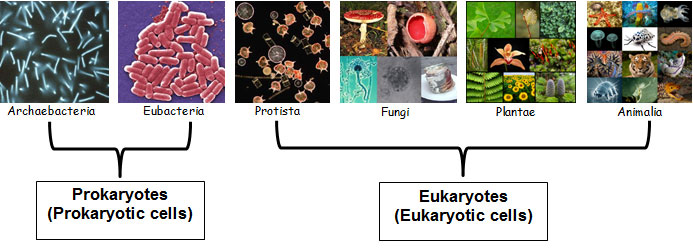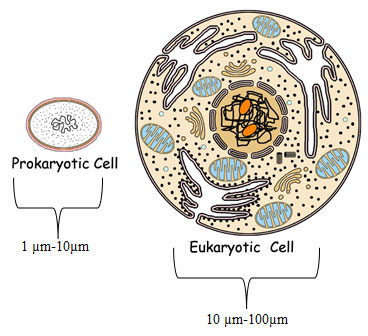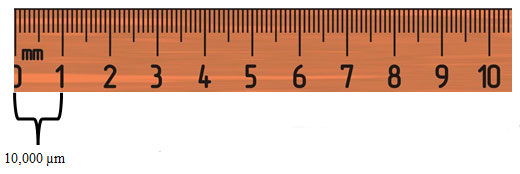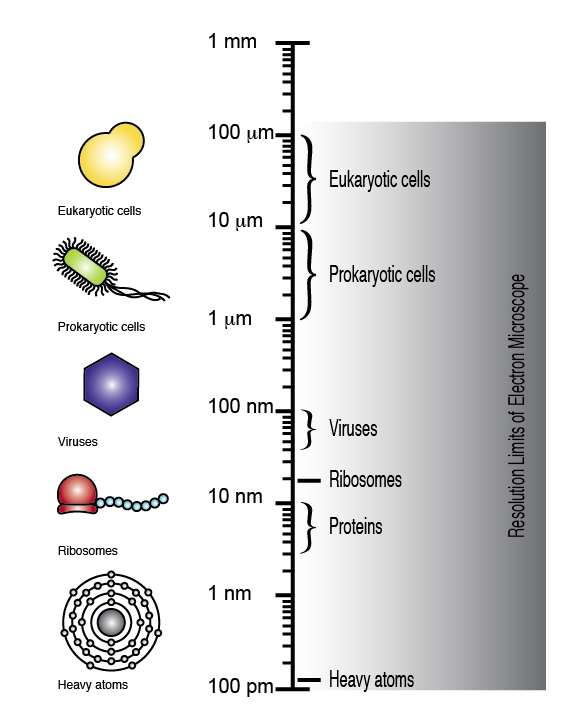
All living things are grouped into one of six kingdoms. Each of these kingdoms has distinct characteristics. Classification starts with the following criteria:
This lesson focuses on the second criteria, type of cells. There are two major groups of cells, prokaryotic and eukaryotic.

As you can see from the graphic above, the organisms found in the kingdoms Archaebacteria and Eubacteria have prokaryotic cells. The organisms found in the other four kingdoms have eukaryotic cells.
Prokaryotic and eukaryotic cells have a number of major differences. We will discuss two of them.
When you see images of prokaryotic and eukaryotic cells, they may not be not drawn to scale and may appear to be the same size. There is, however, quite a difference in their size.

The images above show the typical size range of prokaryotic and eukaryotic cells. The symbol µ stands for the Greek letter mu. The unit µm is called a micrometer. Prokaryotic cells range in size from 1 micrometer to 10 micrometers, while eukaryotic cells have a size range of 10 micrometers to 100 micrometers. What does that mean? What is a micrometer?
There are 1000 micrometers in a millimeter and there are 10 mm in a centimeter.

There are 10,000 micrometers in every cm.


The other major difference between prokaryotic and eukaryotic cells is the storage of genetic material.
Sources for images used in this section, as they appear, top to bottom: